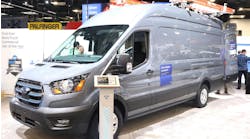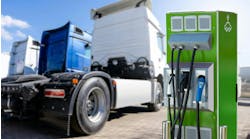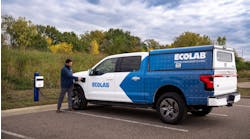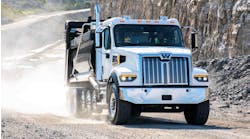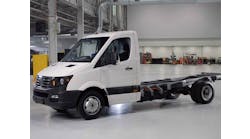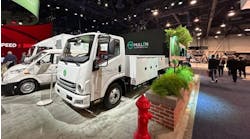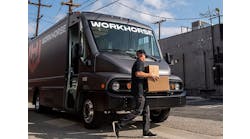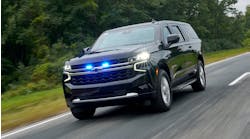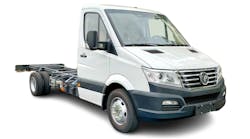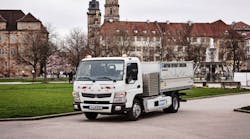The Fuso brand of Daimler Trucks is cooperating with the Municipality of Stuttgart and the logistics company Hermes in Germany on the first fleet test with zero-emission battery-operated trucks.
Stuttgart will test four six-tonne Fuso Canter E-Cell trucks over a period of 12 months in a tough, every-day working environment. Two vehicles with hydraulic tipper bodies will be used in road construction and landscaping. The other two Canter E-Cell with box bodies are scheduled for municipal furniture transport and waste bin delivery tasks.
Hermes will use the Canter E-Cell for urban parcel deliveries. An important test partner of Mercedes-Benz since as far back as the 1980s in the area of alternative drives, Hermes has more recently provided assistance in connection with, for example, the testing of the Vito E-Cell on parcel delivery routes in Berlin and Hamburg. Hermes aims by 2020 to significantly further reduce the CO2 emissions of its fleet.
Hermes has already switched to all-electric deliveries in the center of London and is also taking part in notable pilot projects in Germany.
For Stuttgart's Lord Mayor, Fritz Kuhn, the use of the four Canter E-Cell is an important test of emission-free light-duty trucks in urban transport: "Sustainable mobility is a key issue for cities and electric mobility is an important element. This is where the Municipality of Stuttgart is showing the way. We've decided to make a change to our fleet: all new cars purchased by the Municipality will be electric. I think this sends out a very strong signal. So we're also very happy to test the four Canter E-Cell in day-to-day city traffic."
Fuso gathered initial experience with fully electric Canters in Portugal in 2015. The Canter E-Cell proved a great success in this fleet test involving eight vehicles. It was used not only by courier and freight-forwarding companies, but also by local authorities and urban horticultural businesses. The batteries took around seven hours to charge at a 230-volt/32-ampere power point, while the time dropped to just one hour when using a fast-charging system (390 V/100 A).
The results of this one-year practical trial show that the vehicles stood the test of daily use in short-distance delivery and urban transport. With a range of over 100 kilometers, the Canter E-Cell vehicles exceeded the average distance that many trucks used in light-duty short-radius distribution cover each day. Based on the current cost of diesel and electricity in Portugal, the trial also produced savings in operating costs of up to 64 percent compared with a conventional diesel truck.
Fuso is the leading manufacturer of partially electric light-duty trucks. Thus, some 3000 Fuso Canter Eco Hybrids are in service around the world. The handling strategy for the Canter Eco Hybrid is based on the vehicle starting up and moving off in quiet, electric mode. Then, at a speed of around 10 km/h, the diesel engine cuts in. Below this speed, it also runs at idle to supply power to the ancillary assemblies. Another strength of the Canter Eco Hybrid is its load-carrying capacity. The extra weight of all the hybrid components amounts to merely around 150 kg. This means that the load capacity of the 7.5-tonne model as a chassis with cab comes to 4.8 t.
On the outside, the only difference between the Fuso Canter E-Cell and its diesel-engined or diesel-electric powered counterparts is the battery packs, which are mounted on either side of the frame and together weigh 600 kilograms. An electric powertrain takes the place of the three-litre diesel engine behind the unchanged Canter cab. The permanent-magnet motor delivers 110 kW (150 hp) of power to the rear axle via a single-speed transmission.
The chassis frame is approved for a total weight of six tonnes. The 3400-millimeter wheelbase offers space for bodies up to five metres in length, the weight of which must be subtracted from the three-tonne chassis load-bearing capacity. The then remaining payload of just over two tonnes is more than adequate for most urban short-radius distribution tasks.
